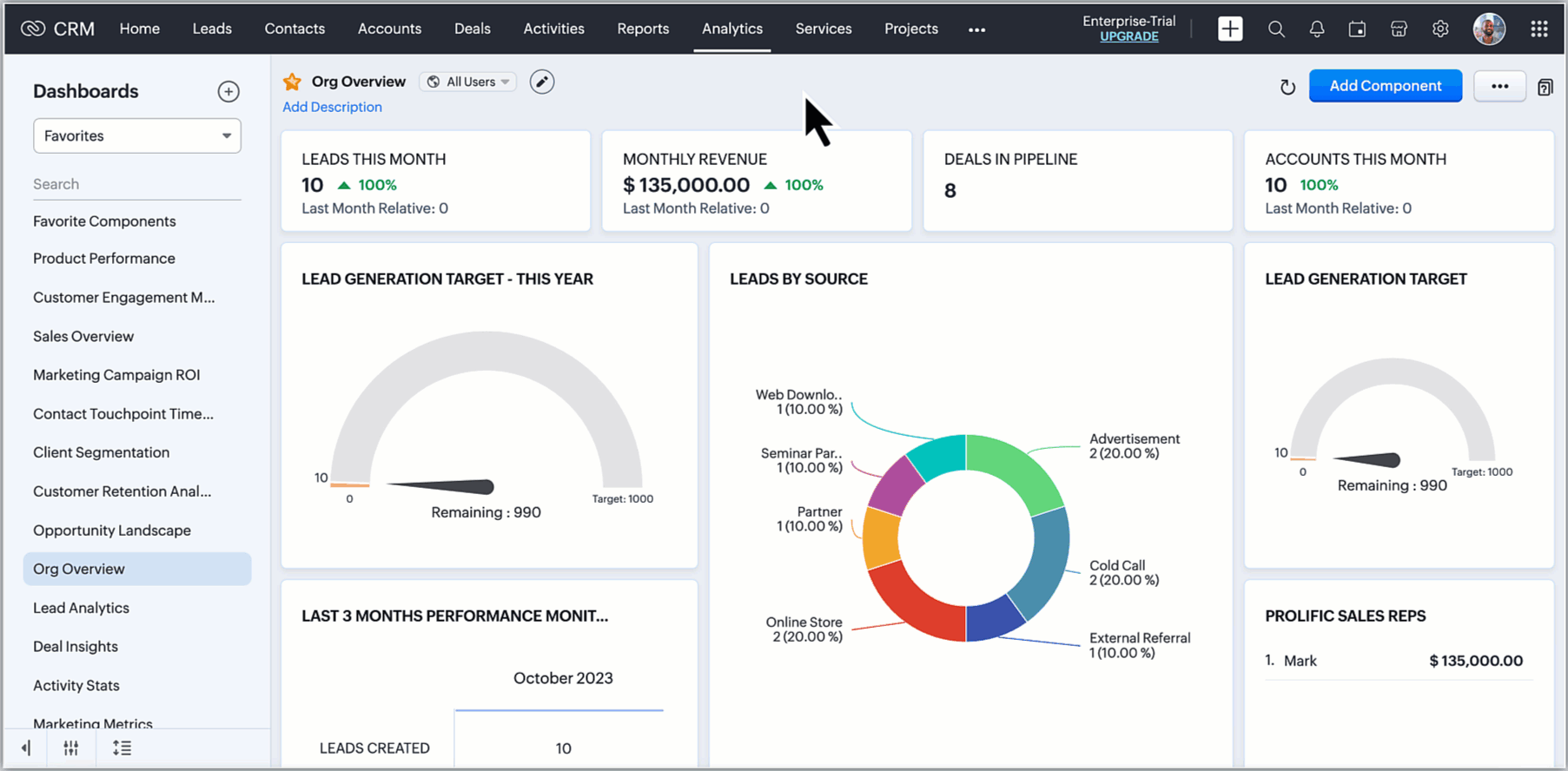
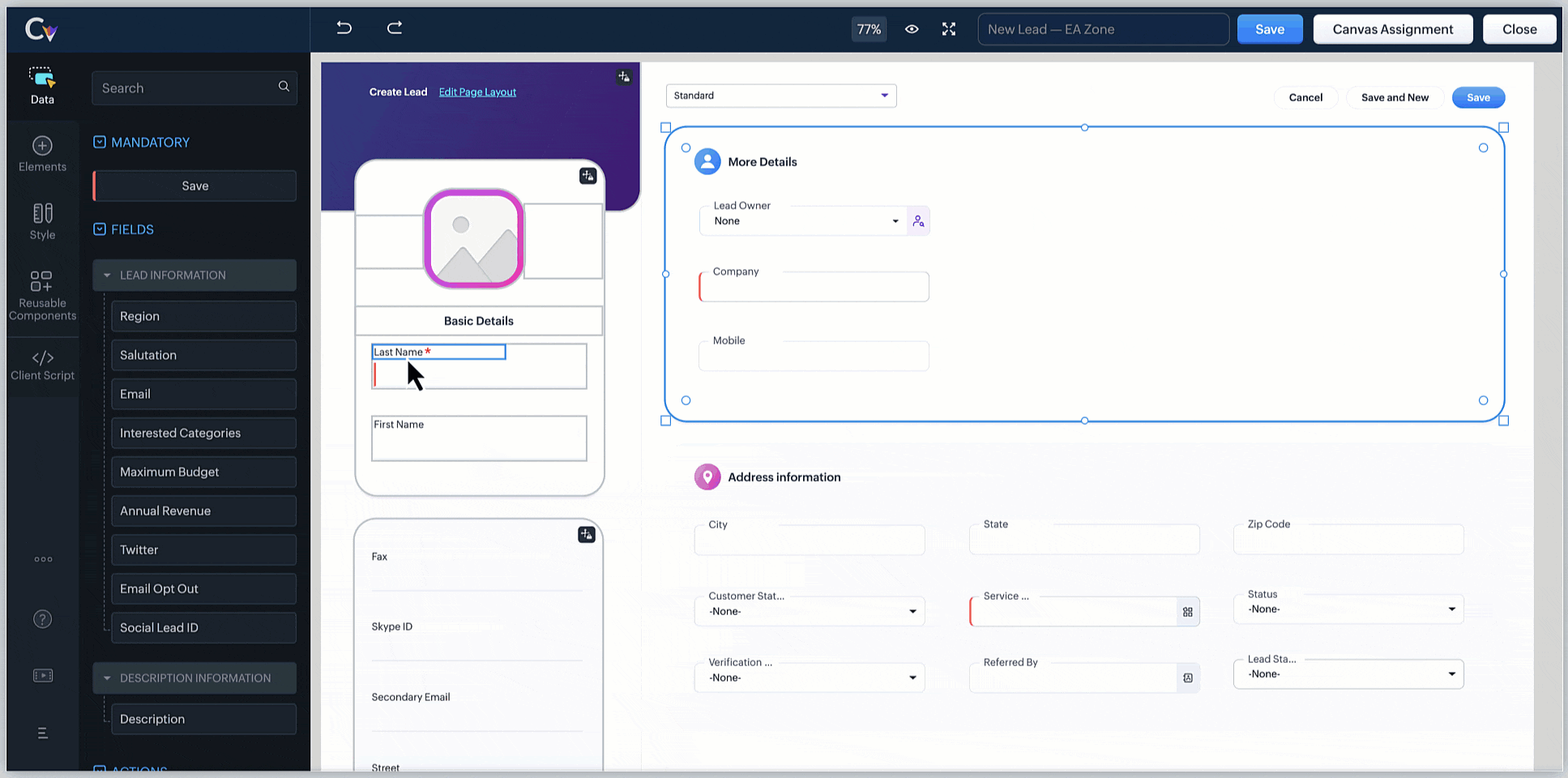
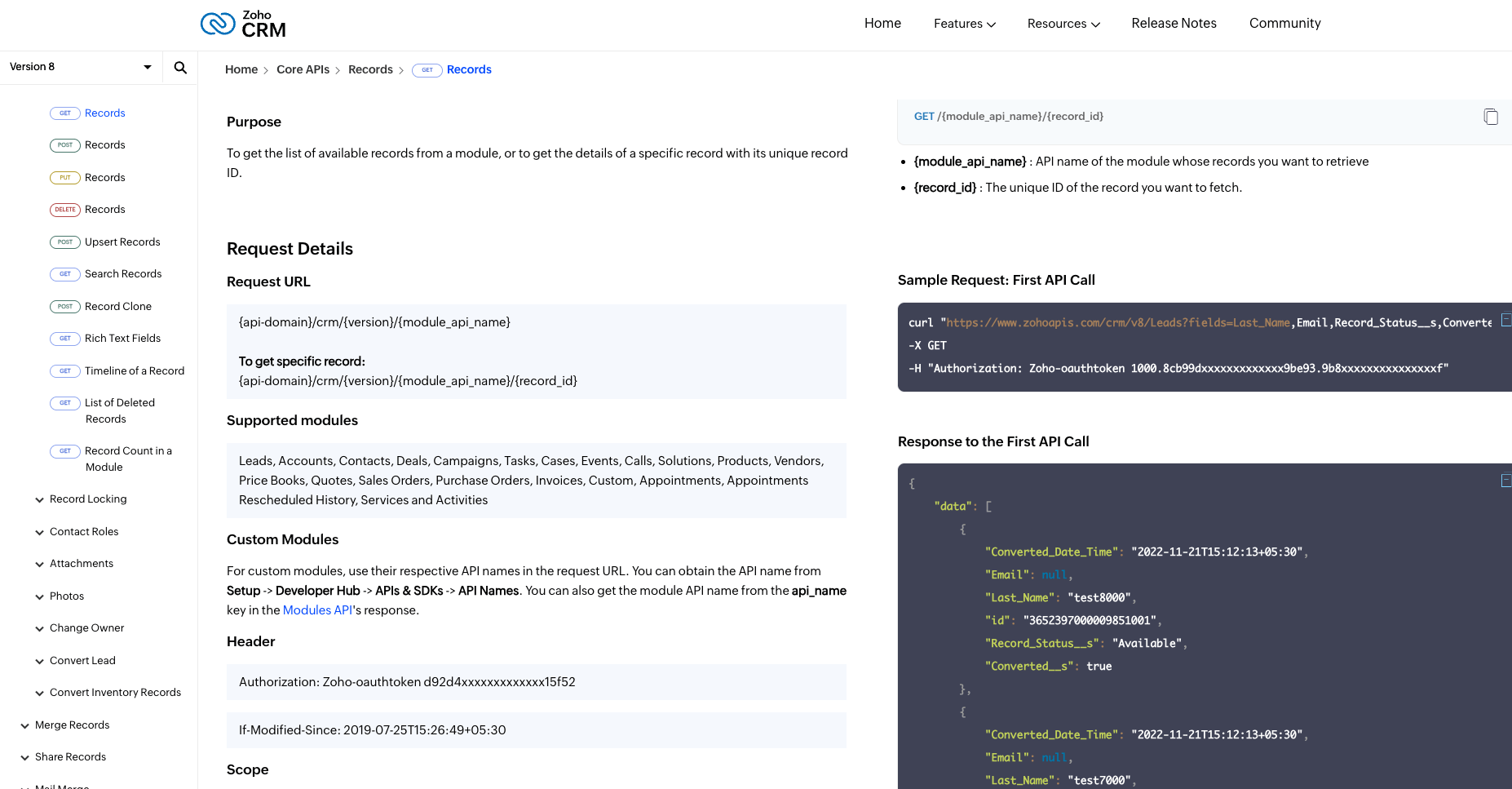
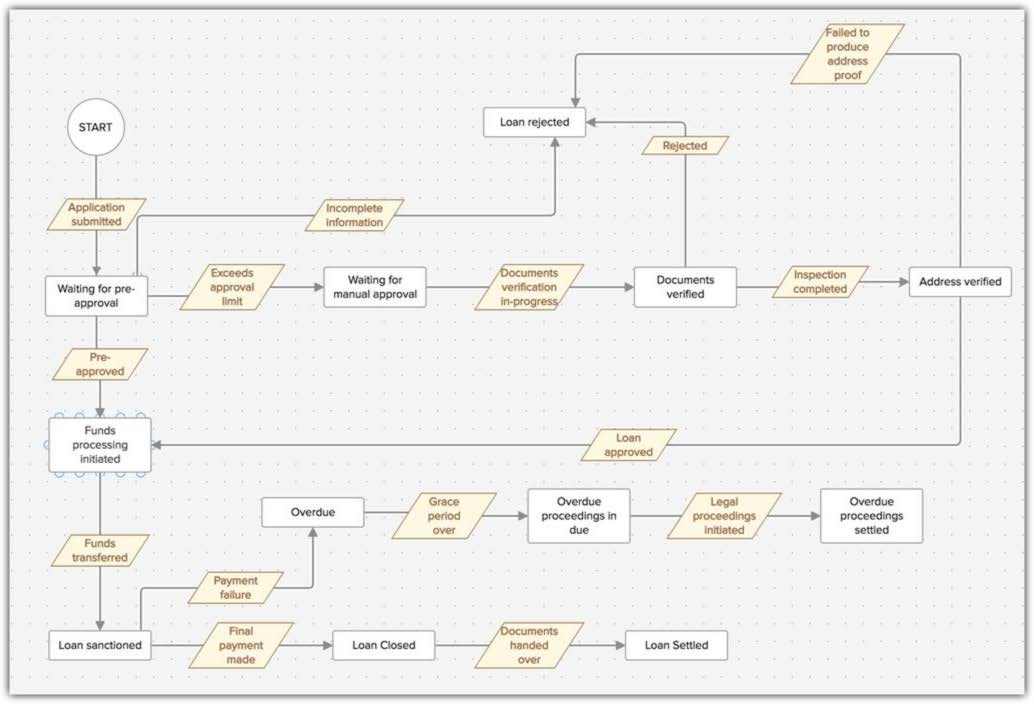
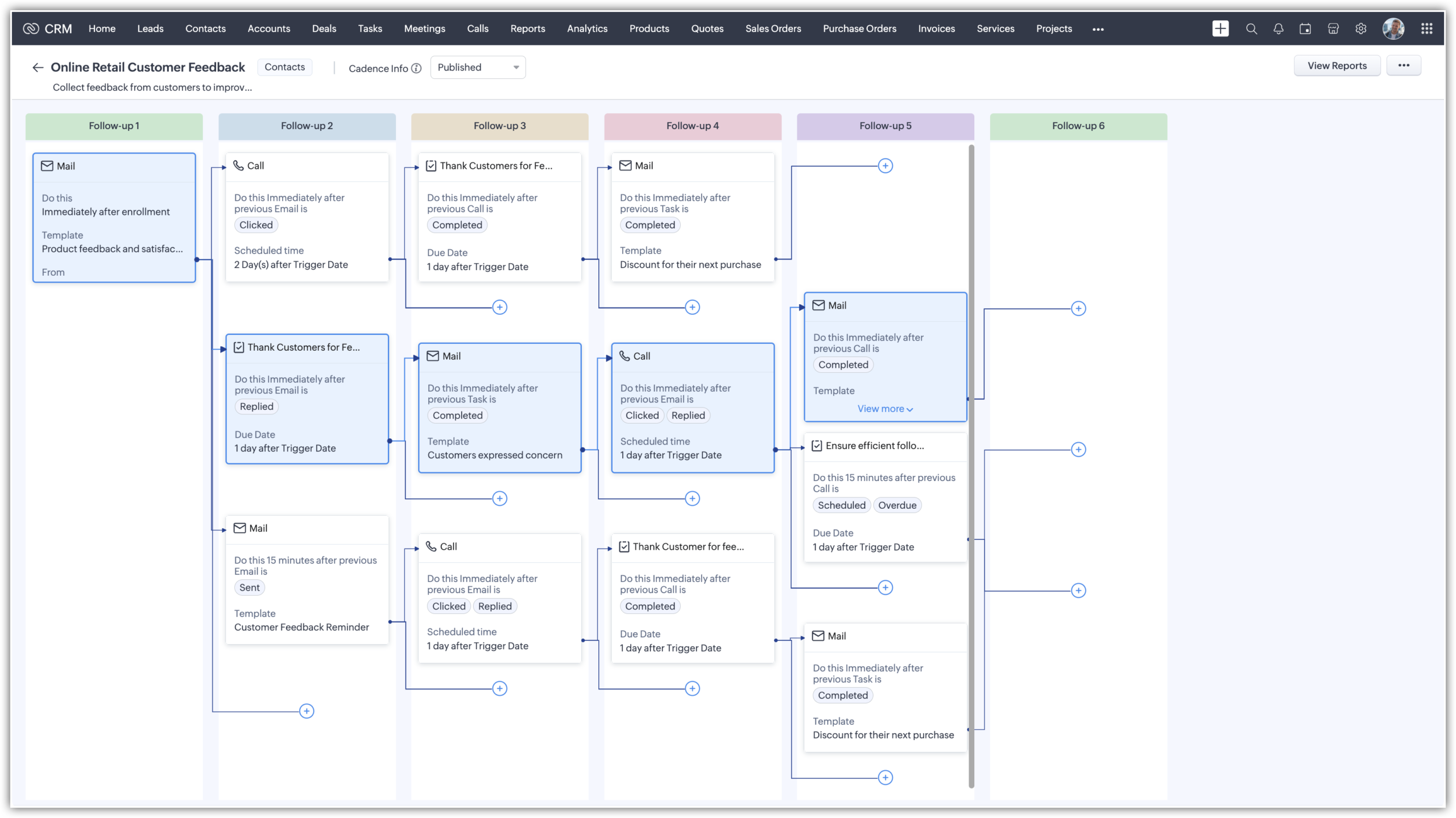
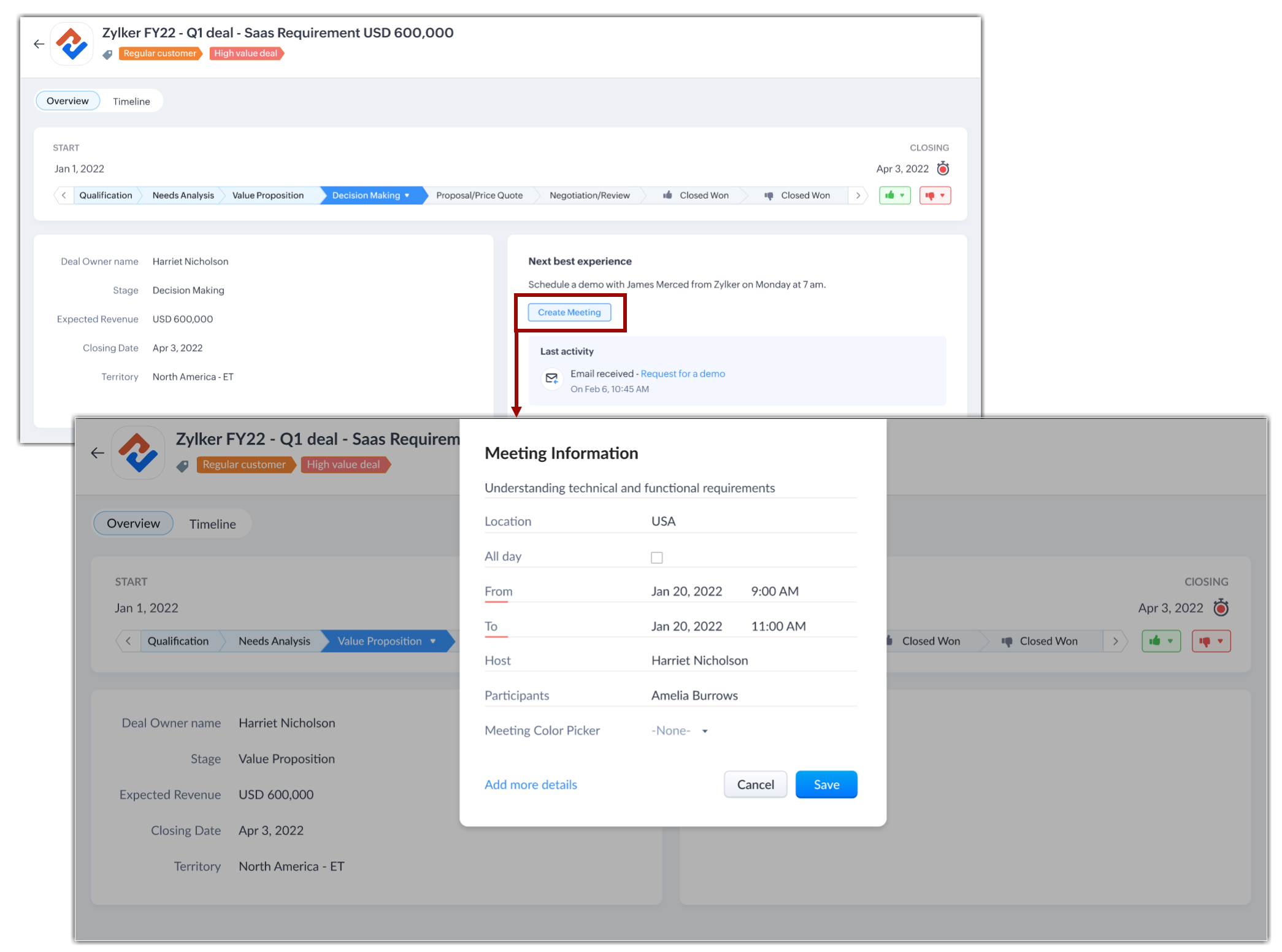
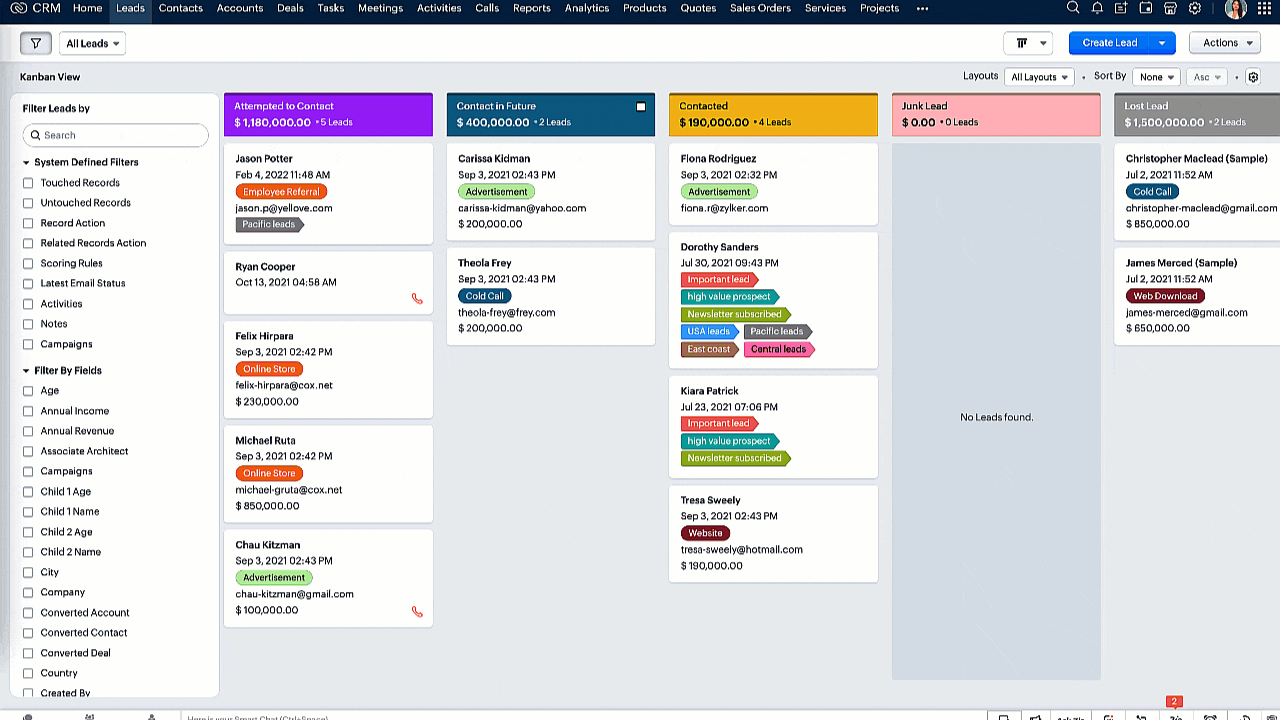
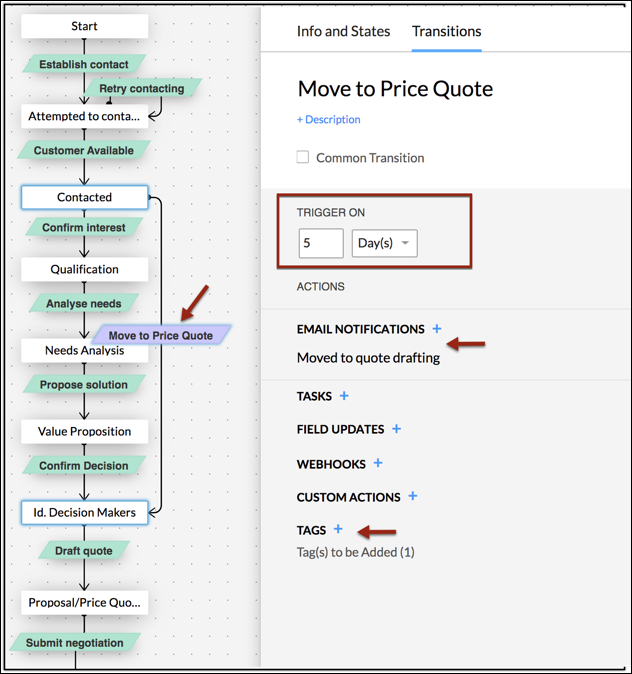
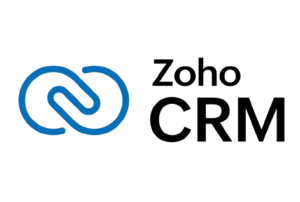
product overview
Zoho CRM is a leading B2B SaaS platform, serving over 250,000 businesses globally . It holds an 8.4% share of the global CRM market, ranking among the top five CRM providers worldwide . The platform is renowned for its affordability, extensive customization options, and robust automation capabilities, making it a preferred choice for SMB’s and enterprises.
ownership
Led platform-wide automation, extensibility, and integration efforts for Zoho CRM’s low-code layer. Scoped and delivered key components including:
- Advanced automation engine (Blueprint, Workflows) for reusable, cross-module logic
- Scalable API and SDK frameworks powering integrations, marketplace apps, and third-party developer adoption
- UX and admin flow optimizations reducing setup time and increasing feature adoption
- Industry-specific components (e.g. real estate, finance) enabling rapid verticalization across use cases
- Standardized internal tooling, docs, and dev sandboxes to support platform scalability and partner enablement
Focused on building flexible, extensible systems that scaled across products and reduced implementation friction.
Market Sizing & Opportunity
The global CRM market, valued at over $71B and projected to reach $150B by 2030, continues to grow with rising SMB adoption and demand for automation. While major players like Salesforce and HubSpot led in brand, they lacked affordable, flexible, and AI-driven solutions accessible to non-dev users
Personas, Use Cases & Solution footprint
Admins, Developers & Integration Partners
Use Case: Build scalable, maintainable CRM logic and integrations across diverse business units without deep platform rewrites.
Key Challenges:
- Fragmented automation across modules caused high config overhead and debugging complexity
- Lack of modularity made enterprise-scale implementations slow and error-prone
- Rigid CRMs offered limited control over UI, record logic, and field-level customization
- No unified toolkit for managing API limits, auth tokens, retries, or versioned deployments
- Poor visibility into integration failures, payload structure, and execution order
Solution Footprint:
- Blueprint & Workflow Engine: Modular, event-driven automation with conditional logic, webhook triggers, email/notification handlers, and multi-branching stage management
- Deluge (Zoho’s scripting language): Embedded logic layer within workflows and custom functions; used for field manipulation, API calls, and dynamic record updates
- Zoho REST API Suite: CRUD operations, bulk APIs, search endpoints, composite APIs, and retry-safe async job management
- OAuth 2.0 & Refresh Tokens: Scoped access control across integrations; used in multi-tenant partner apps and secure third-party extensions
- Client SDKs (Java, Python, Node.js, PHP): Standardized libraries for token refresh, error handling, rate limit management, and payload structuring
- Canvas UI Toolkit: Declarative UI layer to override record views and inject logic-based field visibility based on role, state, or workflow
- Sigma (Marketplace Framework): CI-compatible deployment flow, app packaging, sandbox verification, and live publishing for extension distribution
- Error Monitoring & Retry Engine: Custom retry handlers and status tracking for failed workflows, API timeouts, and webhook dead-letter queues
- Reusable Module Templates: Prebuilt vertical components (e.g. KYC flows in finance, lead routing in real estate) with logic blocks, data models, and guided config
These tools enabled partners and internal teams to build high-volume automations, integrate across ERP, CPQ, and support systems, and optimize CRM performance—without compromising security, auditability, or upgrade paths.
Impact & Reach
- 40% reduction in workflow setup time via reusable logic blocks, guided automation builders, and Deluge scripting templates
- >90% API uptime and SLA adherence, powered by versioned SDKs and enhanced retry/token management
- 5 major SDKs delivered (Java, Python, PHP, Node.js, .NET) improving dev experience and reducing integration time by ~35%
- 200+ partner apps launched via Sigma Marketplace, supported by sandbox tooling and CI-ready publishing flows
- CSAT improvement by 35% in admin-configured modules post Canvas UI rollout and onboarding redesign
- Enabled platform-wide automation reuse, reducing duplicated logic across orgs and speeding cross-team delivery cycles
- 80M+ user base impacted through extensible features like Blueprint, Workflows, and Canvas across global deployments
- 3x adoption increase in Blueprint and Canvas modules within 12 months post UX and admin flow optimization
Strategic Initiatives & Learnings
- Shifted from feature delivery to platform extensibility, enabling scalable reuse across verticals
- Prioritized low-code standardization—balancing flexibility with control for admins and developers
- Built core API and SDK foundations early, which accelerated partner adoption and integration velocity
- Invested in guided UX and defaults, reducing config errors and improving time to deploy
- Learned that automation adoption scales only when paired with visibility (logs, retries, testing tools)
- Aligned product direction with industry-specific needs (finance, real estate), driving deeper use case fit and partner traction

